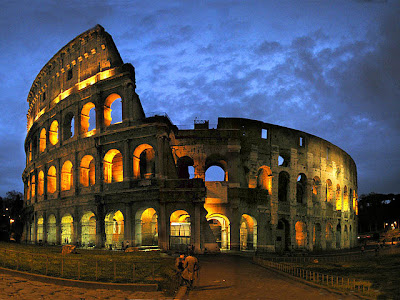Exposure value represents all possible combinations of the three elements of photographic exposure namely Aperture, Shutter Speed and ISO that return the same exposure. An understanding of what Exposure value is and how it affects the different settings on a digital camera is necessary to excel in digital photography as most light meters; both independent and those inbuilt in your digital cameras operate using the EV system.
The principle of Exposure Value (EV) is used to represent the exposure generated by a given combination of Aperture, Shutter Speed and ISO.
EV Zero = f/1 at 1s at ISO 100 ( Aperture value of f/1 and One Second Shutter Speed at 100 ISO). This is the exposure setting required to properly expose a dimly lit interior and it is the base of EV.
From the above paragraphs we understood that EV indicates a specific quantity of light. And this specific quantity of light represented by a EV value is possible to achieve by several different combinations of Aperture, Shutter Speed and ISO. Such combinations producing the same EV are called Equivalent Exposures.
For example let us take a look at Equivalent Exposures for EV 10
EV 10 @ ISO 100 =
1/1000 second at f/1
1/500 second at f/1.4
1/250 second at f/2
1/125 second at f/2.8
1/60 second at f/4
1/30 second at f/5.6
1/15 second at f/8
⅛ second at f/11
¼ second at f/16
½ second at f/22
1 second at f/32
When the exposure is increased by 1 stop (either by halving the aperture or by doubling the shutter speed) the Exposure Value (EV) will increase by 1 and each time the exposure is decreased by 1 stop (either by doubling the aperture or by halving the shutter speed) the Ev will decrease by 1.
when shooting in automatic mode, the camera determines the optimal combination of aperture, shutter speed, and ISO for each scene, based on the exposure value determined by the light metering system. A high EV indicates bright shooting conditions, and hence the need for high shutter speeds, high f-numbers, and/or low ISO, to avoid overexposure. And similarly a low EV indicates low light situations which demand slow shutter speeds, lower f-numbers, and/or high ISO to avoid under exposure.
But when using more creative shooting mode like the Aperture priority mode and the Shutter priority mode the camera acts differently.
Firstly in both these modes the ISO is not set by the camera. The ISO manually set by the photographer is retained.
When shooting in Aperture priority (AV) mode the camera will keep the Aperture value constant and adjust the shutter speed to keep the EV constant.
When shooting in Shutter priority (TV) mode, the camera will keep the Shutter speed constant and adjust the Aperture to keep the EV constant.
All though Equivalent Exposures technically produce the same quantity of light the effect of using each of these combinations in photography is different. Depending on the Shutter Speed and the Aperture values chosen the way movement is captured and the depth of field in the picture will vary. Between these different combinations of obtaining the same Exposure Value (EV) lies the endless opportunity for a creative photographer to capture the scene as his heart desires.
In the next article we will discuss about Photography - Tips For Beginners - Exposure Compensation
 |
| Photo By Mladjenovic |
The principle of Exposure Value (EV) is used to represent the exposure generated by a given combination of Aperture, Shutter Speed and ISO.
EV Zero = f/1 at 1s at ISO 100 ( Aperture value of f/1 and One Second Shutter Speed at 100 ISO). This is the exposure setting required to properly expose a dimly lit interior and it is the base of EV.
Equivalent Exposures
From the above paragraphs we understood that EV indicates a specific quantity of light. And this specific quantity of light represented by a EV value is possible to achieve by several different combinations of Aperture, Shutter Speed and ISO. Such combinations producing the same EV are called Equivalent Exposures.
 |
| Photo By Martin Gommel |
For example let us take a look at Equivalent Exposures for EV 10
EV 10 @ ISO 100 =
1/1000 second at f/1
1/500 second at f/1.4
1/250 second at f/2
1/125 second at f/2.8
1/60 second at f/4
1/30 second at f/5.6
1/15 second at f/8
⅛ second at f/11
¼ second at f/16
½ second at f/22
1 second at f/32
 |
| Photo By Strom Crypt |
Exposure Value (EV) and Shooting Modes
when shooting in automatic mode, the camera determines the optimal combination of aperture, shutter speed, and ISO for each scene, based on the exposure value determined by the light metering system. A high EV indicates bright shooting conditions, and hence the need for high shutter speeds, high f-numbers, and/or low ISO, to avoid overexposure. And similarly a low EV indicates low light situations which demand slow shutter speeds, lower f-numbers, and/or high ISO to avoid under exposure.
 |
| Photo By Martin Gommel |
Firstly in both these modes the ISO is not set by the camera. The ISO manually set by the photographer is retained.
When shooting in Aperture priority (AV) mode the camera will keep the Aperture value constant and adjust the shutter speed to keep the EV constant.
When shooting in Shutter priority (TV) mode, the camera will keep the Shutter speed constant and adjust the Aperture to keep the EV constant.
 |
| Photo By Shandi Lee |
In the next article we will discuss about Photography - Tips For Beginners - Exposure Compensation